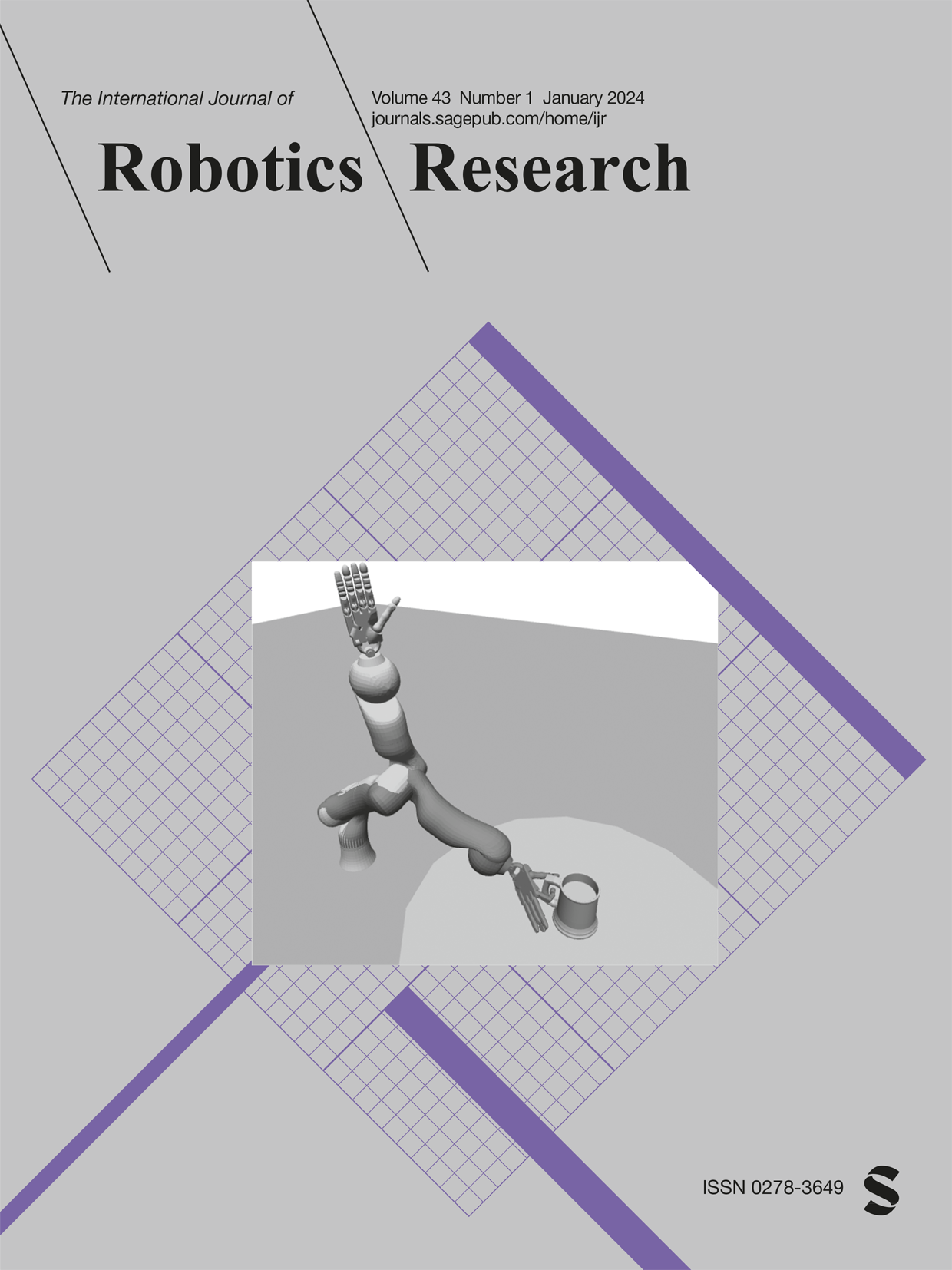GRSTAPS:图形递归的同时任务分配、规划和调度
IF 5
1区 计算机科学
Q1 ROBOTICS
引用次数: 12
摘要
多机器人团队的有效部署需要在不同的抽象层次上解决几个相互依赖的问题。具体来说,异构多机器人系统必须回答四个重要问题:什么(任务规划),如何(运动规划),谁(任务分配)和何时(调度)。尽管有大量的工作致力于这些问题的各种组合,但对所有四个问题的全面综合处理超出了当前文献的范围,甚至缺乏对完整问题的正式描述。在本文中,我们首先将这类多机器人问题形式化,称为具有时空约束的同步任务分配和规划(STAP-STC),然后提出一种解决方案,我们称之为图形递归同步任务分配、规划和调度(GRSTAPS)。GRSTAPS将任务规划、任务分配、调度和运动规划穿插在一起,在执行多层搜索的同时有效地在系统模块之间共享信息。GRSTAPS除了提供STAP-STC问题的统一解决方案外,还包括任务规划和任务分配方面的个人创新。在任务规划级别,我们的交错方法允许规划器抽象出哪些代理将使用我们称为代理不可知规划的方法执行任务。在任务分配层面,我们提出了一种基于搜索的算法,可以同时满足规划约束和任务需求,同时优化相关的调度。我们在模拟应急响应领域使用详细的烧蚀和比较实验来证明GRSTAPS的有效性。这些实验结果最终表明,GRSTAPS在计算时间、解决质量和问题覆盖率方面优于烧蚀基线和最先进的时间规划。本文章由计算机程序翻译,如有差异,请以英文原文为准。
GRSTAPS: Graphically Recursive Simultaneous Task Allocation, Planning, and Scheduling
Effective deployment of multi-robot teams requires solving several interdependent problems at varying levels of abstraction. Specifically, heterogeneous multi-robot systems must answer four important questions: what (task planning), how (motion planning), who (task allocation), and when (scheduling). Although there are rich bodies of work dedicated to various combinations of these questions, a fully integrated treatment of all four questions lies beyond the scope of the current literature, which lacks even a formal description of the complete problem. In this article, we address this absence, first by formalizing this class of multi-robot problems under the banner Simultaneous Task Allocation and Planning with Spatiotemporal Constraints (STAP-STC), and then by proposing a solution that we call Graphically Recursive Simultaneous Task Allocation, Planning, and Scheduling (GRSTAPS). GRSTAPS interleaves task planning, task allocation, scheduling, and motion planning, performing a multi-layer search while effectively sharing information among system modules. In addition to providing a unified solution to STAP-STC problems, GRSTAPS includes individual innovations both in task planning and task allocation. At the task planning level, our interleaved approach allows the planner to abstract away which agents will perform a task using an approach that we refer to as agent-agnostic planning. At the task allocation level, we contribute a search-based algorithm that can simultaneously satisfy planning constraints and task requirements while optimizing the associated schedule. We demonstrate the efficacy of GRSTAPS using detailed ablative and comparative experiments in a simulated emergency-response domain. Results of these experiments conclusively demonstrate that GRSTAPS outperforms both ablative baselines and state-of-the-art temporal planners in terms of computation time, solution quality, and problem coverage.
求助全文
通过发布文献求助,成功后即可免费获取论文全文。
去求助
来源期刊
CiteScore
22.20
自引率
0.00%
发文量
34
审稿时长
6-12 weeks
期刊介绍:
The International Journal of Robotics Research (IJRR) has been a leading peer-reviewed publication in the field for over two decades. It holds the distinction of being the first scholarly journal dedicated to robotics research.
IJRR presents cutting-edge and thought-provoking original research papers, articles, and reviews that delve into groundbreaking trends, technical advancements, and theoretical developments in robotics. Renowned scholars and practitioners contribute to its content, offering their expertise and insights. This journal covers a wide range of topics, going beyond narrow technical advancements to encompass various aspects of robotics.
The primary aim of IJRR is to publish work that has lasting value for the scientific and technological advancement of the field. Only original, robust, and practical research that can serve as a foundation for further progress is considered for publication. The focus is on producing content that will remain valuable and relevant over time.
In summary, IJRR stands as a prestigious publication that drives innovation and knowledge in robotics research.

 求助内容:
求助内容: 应助结果提醒方式:
应助结果提醒方式:


